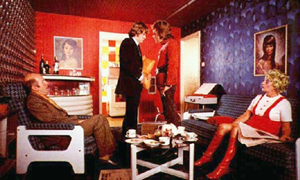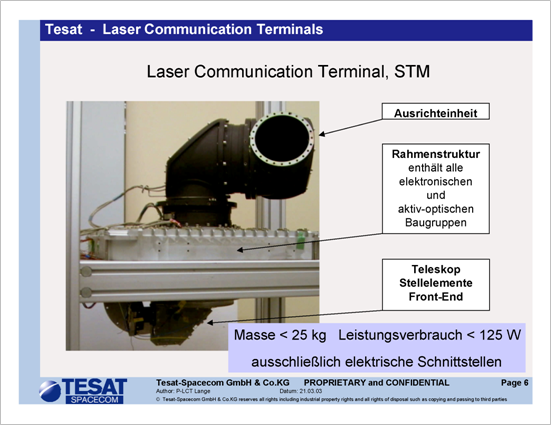
How do you do, Joe? Find the room comfortable,
do you? No complaints?
In May, the Washington AeroSpace Briefing reported that MDA Director Trey Obering “appeared to imply that a controversial kill vehicle payload [for the Near Field Infra Red Experiment] that was canceled last summer due to technical risk could be reinstated.”
I don’t know how to tell you this, NFIRE KV, but MDA has rented out your room.
Space News reports, that NFIRE will carry a German laser communications payload in the space vacated by the KV:
German Payload to Fly Aboard NFIRE Satellite
The U.S. Missile Defense Agency (MDA) plans to fly a German laser communications payload aboard an experimental infrared satellite that is slated for launch next year, according to an agency official.
The MDA found itself with additional room aboard the Near Field Infrared Experiment (NFIRE), which is designed to help gather data on distinguishing between a missile’s body and exhaust plume, after it eliminated a controversial payload that was to separate from the main spacecraft to take a closer look at a target, said Kevin Robinson, the MDA’s chief engineer on the Kinetic Energy Interceptor program. Data from the NFIRE experiment is supposed to feed into the interceptor program.
Robinson did not provide additional details about the German payload.
I assume the payload is part of an ongoing project by the German Aerospace Center (Deutschen Zentrum für Luft- und Raumfahrt or DLR) and German-firm TESAT-Spacecom to develop Laser Communications Terminals for intra-satellite communications.
Gerry has announced plans to orbit an LCT on a future German radar satellite, TERRASAR-X. More details to come, I hope.
Technically-inclined German speakers might find the following presentation by TESAT’s Dr. Robert Lange informative.


> Technically-inclined German speakers
Redundant?
Here is my poor German/google translate skills at work:
I find the German word Schnittstellen funny.